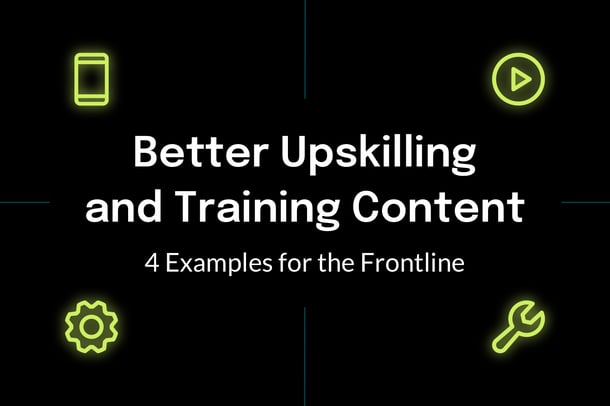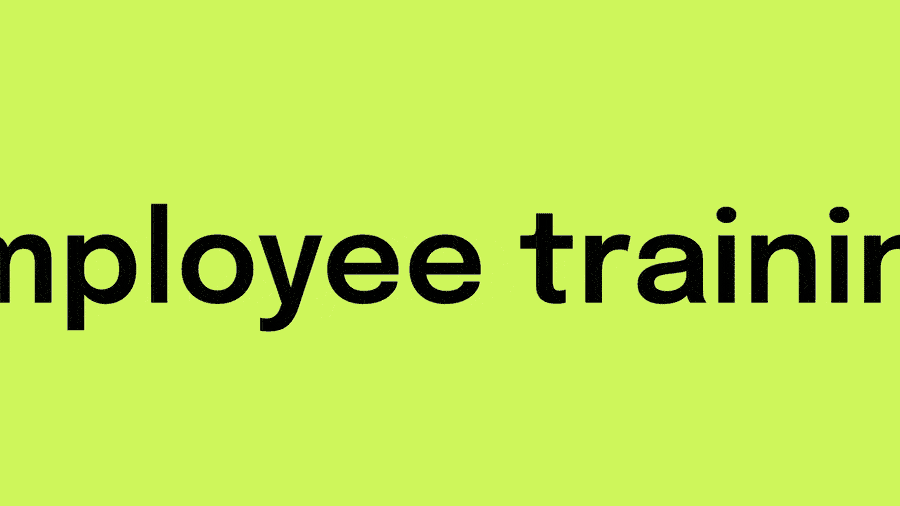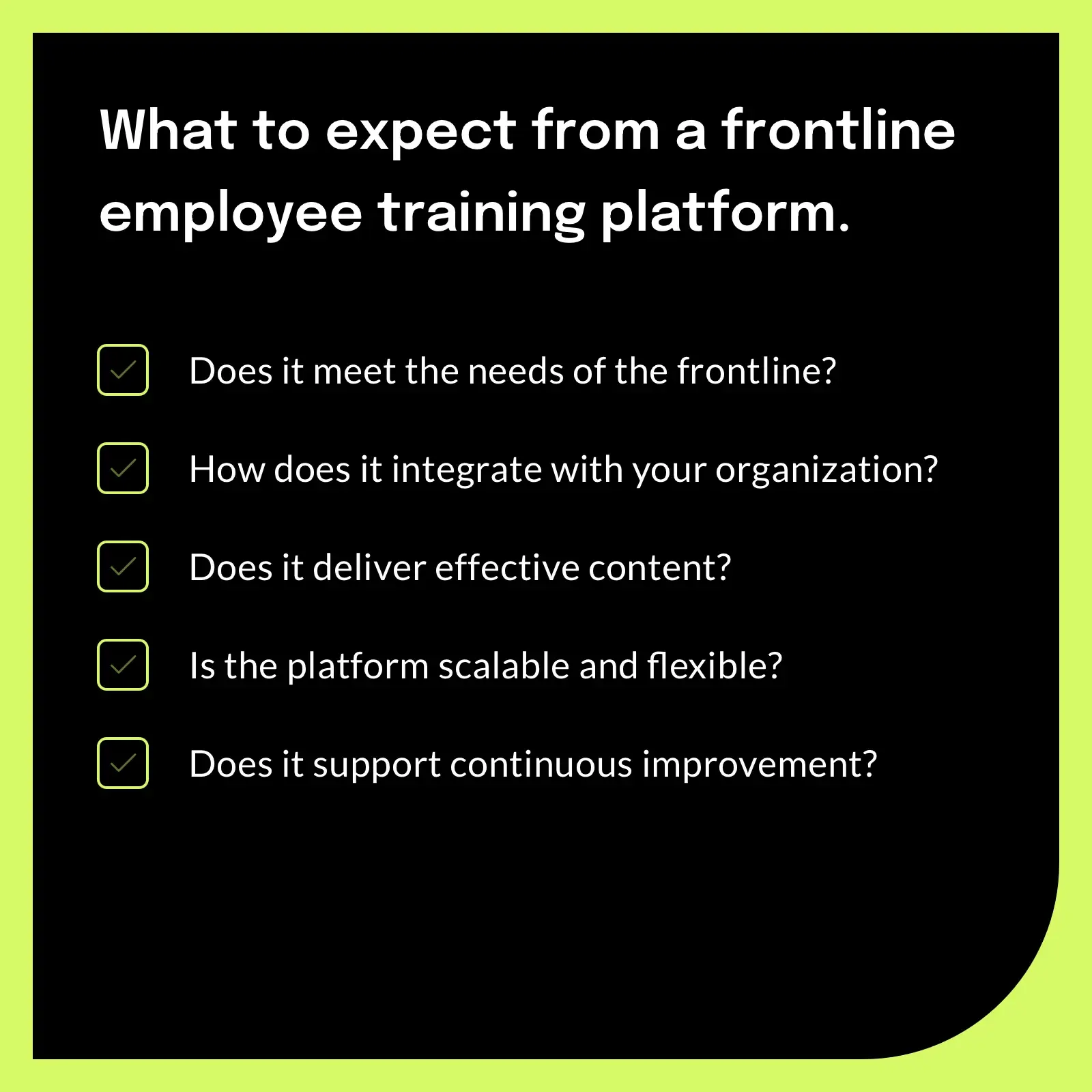

Here’s What to Look for in a Frontline Employee Training Platform.
Explore the key factors to consider when choosing an employee training platform tailored for the industrial and manufacturing frontline.
What exactly is an employee training platform?
It's a simple answer - with a bit of a catch.
An employee training platform is the software that a company uses to deliver training within their organization. It delivers learning activities, tracks growth and progress, and helps employees advance their careers while developing the skills to perform their jobs according to standards.
But here's that catch: every organization, every team, every training manager, and every frontline employee has a different set of needs.
In the same line of thought - the needs of a frontline workforce in the manufacturing and other industrial applications differ greatly from the needs of an office-based workforce.
The bottom line: An employee training platform is only as effective as its capacity to meet those needs.
And most often, the frontline workforce needs an agile employee training platform that's been optimized to facilitate on-the-job learning.
Here's a breakdown of the most important factors to consider when selecting an employee training platform for the frontline.
We'll also highlight the points where an effective employee training platform for the frontline might differ from a more traditional employee training platform like a Learning Management System (LMS).

1. Does it meet the needs of the frontline?
For workers on the frontline in the manufacturing and industrial sectors, there are a number of factors that are incredibly important:
- Accessibility
- Standardization
- Safety
- Compliance and quality control
Accessible.
More than anything, frontline employees need to access the relevant training, standards, and job aids in the moment of need.
For employees engaging in on-the-job training initiatives - which are proven to boost knowledge retention - it's mission-critical that they have access to the materials within their flow of work. This is often accomplished by attaching content to a QR code and having learners scan it to access on a mobile device.
Tools like Learning Management Systems (LMS) are often the gold standard for the training and development of employees around the world. But these systems typically deliver training materials on desktops, and are not designed to give access to on-the-job learning in the production environment.
An LMS will ultimately fail the frontline as a platform for on-the-job training and knowledge if it is not used in tandem with a more accessible solution for knowledge distribution.
|
An LMS will help teach the way-of-working and systems of the organization for continued education, but primarily focuses on tracking coursework. This training is typically delivered on a desktop, either in person or online.
DAAN ASSEN, Head of Product and Co-Founder at
SwipeGuide
|
Standardized.
One of the main benefits of a digital employee training platform is the ability to standardize content across different areas of a production environment, or across locations within a global value chain.
If Employee A and Employee B are working with the same machinery at two different plants, 1000 miles apart, they should have access to the same training standards, as well as any content improvements that might be discovered.
The beauty of an intuitive digital system is that these improvement ideas are sent instantly - and updating content to reflect them is as effortless as possible.
This ensures that product quality is consistent, but it also allows different locations to reap the benefits of any improvements or insights captured around the world.
Here are practical ways that these platforms can promote standardization for the frontline:
- Sharing learning content and standards with other locations, teams, lines, or sites.
- Capturing feedback and distributing changes to processes once approved
- Simple editing and content revisions from managers and supervisors
💡 You can read here about how Orkla Foods standardizes global content to improve training.
Safety-focused.
A training platform should deliver relevant safety materials for each and every task in the production environment. Ideally, this information should be present and able to be referenced easily during the flow of work.
Safety information can and must also be included in all training materials and job aids. The best employee training platforms will have a method to reinforce safety standards as users work their way through learning materials.

Embedding safety information in training materials and SOPs boosts learning and adherence.
Compliant.
In an industry like manufacturing, compliance (or a lack therof) is a deal-breaker. You depend on your frontline to be performing at their best in order to meet the stringent requirements of the industry.
Modern training platforms need to have the ability to verify training content against compliance goals with features like supervisor sign-offs and checklists.
A checklist, presented on-the-job, will allow all users to verify a process against existing standards - whether they're a veteran employee or a fresh recruit. The content of checklists depends on the context in which it's used, but often includes:
- 5S standards
- Centerlining
- Sanitation
- Competency checks
- Safety checklists
- Training content
2. Does it integrate with your organization?
An employee training platform needs to fit seamlessly within the existing workflows, tech stack, and goals of your company.
Delivering existing content.
Training platforms don't exist in a vacuum. Any new system needs to be adaptable and fit into the existing workflows within an organization in order to be cost and time-effective.
Look for platforms that promote a simple content creation and editing workflow, and that allow training content and standards to be imported with minimal hassle.
A robust Data API (see below) will allow you to use advanced data systems integrated with a training platform to track adherance and usage accross your organization.
Support skills development and skills-based training.
Competency and skills-based training are gaining momentum in the frontline industries, and for good reason.
An employee training platform needs to
Rather than delivering knowledge, skills-based training emphasizes the application and demonstration of skills. Employees are provided with opportunities to practice and showcase their competencies, allowing them to build confidence and proficiency in their roles.
Not only does this improve knowledge retention, but it helps training initiatives integrate with existing skills development and management initiatives.
 A training or skills matrix allows supervisors to understand competency levels and skills gaps at a glance - and assign relevant training materials.
A training or skills matrix allows supervisors to understand competency levels and skills gaps at a glance - and assign relevant training materials.
Data API.
The modern manufacturer relies on a host of different systems and tools to achieve peak productivity. From digital job aids and on-the-job training resources, to data visualization and analytics platforms - these technologies need to integrate with one another in a way that's stable, secure, and predictable.
Your employee training platform is no exception, and should (at the very least) include a robust API to connect with other powerful software and get the most out of each training experience.
For example: a robust Data API will allow you to use advanced data systems integrated with a training platform to track adherance and usage across your organization. This streamlines the process of performing accurate, meaningful data analysis and visualization by connecting your training platform with the other data systems in your tech stack.
 Mobile devices are often the most effective way to deliver knowledge to the frontline.
Mobile devices are often the most effective way to deliver knowledge to the frontline.
3. Does it deliver effective content?
An effective frontline employee training platform shoud deliver effective content. Okay, but what content is effective in which scenarios?
Mobile.
As we've mentioned above - training content for a workforce who's primarily going to be learning on-the-job is only as effective as it is accessible. The best way to deliver content in a fast-paced production environment?
Mobile devices. Training materials can be accessed on mobile phones or tablets and used right on the production line. It's often as easy as scanning a QR code on a machine and [proceeding with the information.]
Visual.
It's been proven that supplementing [dual-coding] training content with high quality visuals helps improve on-the-job training efforts dramatically. Not only does dual-coded information 'stick' better, but it provides an accurate reference point for learners.

Training in the moment of need.
Digital job aids are quick-reference tools that provide on-the-job support and guidance. They are designed to be easily accessible and provide just-in-time information to frontline employees.
Digital job aids can be in the form of interactive checklists, step-by-step guides, or video tutorials. They are effective for training on specific tasks, troubleshooting common issues, and reinforcing knowledge gained from formal training programs.
Learning Management Systems (LMS) and other back-office solutions.
A Learning Management System (LMS) is a comprehensive platform that allows for the creation, delivery, and tracking of various training modules.
A Training Management System mainly focused on office and desk workers. These systems consist of apps that deliver pre-set courses and topics administered and updated by the HR or Learning and Development team.
These systems help teach the way-of-working and systems of the organization for continued education, but primarily focuses on tracking coursework. This training is typically delivered on a desktop, either in person or online.
A frontline workforce will always need a certain amount of formalized training. However, LMS solutions will have trouble meeting the day-to-day knowledge and training requirements of people who work primarily on the go.
4. Is the platform scalable and flexible?
Scalability and flexibility are crucial factors to consider when choosing a frontline employee training platform for manufacturing. The platform should be able to accommodate the evolving training needs of the organization as it grows and adapts to changes in the industry.
Scalability usually refers to the platform's ability to handle an increasing number of users and training materials without compromising performance. It refers also the platform's ability to scale and standardize training content within a [large] international value chain.
The ability to keep training content consistent at different sites around the world is critical for large-scale manufacturers.
💡 Here's how Barilla is standardizing training and job aids at the frontline.
Flexibility refers to the platform's adaptability to changes in training methodologies and content. Here, it's important to have an editing and creation experience that's easy to use and supports a wide variety of media and materials.
As standards, processes, and procedures change or improve, this new knowledge can be captured and distributed in the most streamlined way possible.

Delivering opportunities for your frontline to give feedback about training content is integral to continuous improvement.
5. Does it support continuous improvement?
Long-term skills development.
We've already covered the importance of short-term skills development - growing the capabilities of your teams in order to improve quality and close skills gaps.
But a great employee training platform will make it easier for an employee to both track and initiate the trainings and certifications that will allow them to accelerate their career.
Not only is this essential for the engagement of your frontline staff, but it lays the groundwork for operational success for years to come. How?
Competent teams = flexibility = better products and less downtime
Building a better culture.
How do all of these elements come together?
1. A competent employee training platform delivers better training, tailored for the frontline.
2. This system allows them to invest in their own future and careers while contributing to the success of your organization
3. A more engaged frontline is less likely to turnover and leave your organization.
AND
4. A more engaged workforce is more likely to invest in a culture dedicated to continuous improvement - by engaging in initiatives to record their own expert knowledge and help improve processes.
5. And in turn, a positive and knowledge-forward culuture is more likely to attract and retain top talent.
Want more employee development content?
👉 Here are the benefits of competency-based training.
👉 Here's our guide to frontline training in 2024.
👉 Here's a breakdown of reskilling vs. upskilling (and the importance of each) at the frontline.
Author
Revisions
It's time to simplify frontline training
Work instructions, checklists, and skills management - all in SwipeGuide
- Cut training time by 50%
- SOC I and II compliant
Get to know us
SCHEDULE YOUR DEMOResources
-
1
How to empower your frontline with better instructional design. -
2
How to gain the edge in Industry 4.0 with smart manufacturing practices. -
3
How to make excellent digital work instructions. -
4
How to deliver continuous improvement at the frontline with Lean principles. -
5
How to capture, share, and improve expert knowledge with digital SOPs.


